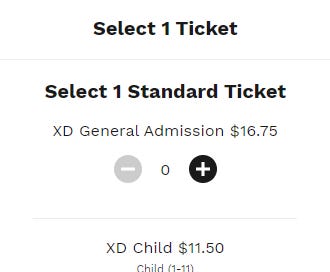Discrimination is increasing
It’s usually not good when discrimination increases, but sometimes it is!
Let me highlight some of my favorite articles that I’ve come across the last few weeks.
Farewell to Two Great Economists
Recently we saw the passing of two economists who have been very influential in my own work.
First, at the end of December, we lost Martin Ravallion. I never met him, and I didn’t even fully appreciate his influence on my work, but he was behind a major paradigm shift in addressing global poverty. He came up with the $1/day measure of poverty that is commonly used, though he was well aware of its shortcomings. After his death, I read a nice piece from a few years ago on his impact.
If you’re interested in exploring Ravallion’s work, David Evans at the Center of Global Development posted a nice round-up of his research.
Another economist we lost is Paul David. I also never met Paul, but he’s my academic grandfather, meaning he was my advisor’s advisor. So I have probably been influenced by him even if I didn’t even realize it.
Paul did a lot of great work on economic history, and his paper on the economics of QWERTY for many students is often the introduction to economic history and path dependence. I even did a video about the paper.
Discrimination at the Theater
We usually use discrimination as a bad word, but in economics there are times when it can be good. Price discrimination is the ability of a producer to charge customers different prices, usually tied to their willingness to pay. While at first this seems like a bad thing, it can actually create good outcomes.
My classic example is movie theaters. Ticket prices usually depend on your age. I’ve included an example below. General admission is $16.75 (woof…inflation), but a child gets a 30% discount. For this showing, seniors also get a 30% discount, but it seems clear they could adjust whether that’s bigger or smaller. Many theaters will also give student discounts.
The crazy thing about these tickets is once you buy one, you can sit anywhere you want. That means two people watching the same movie at the same time can sit next to each other and pay significantly different prices. And this is good!
Movie theaters understand that if I’m taking one of my kids to the movie, that $33.50 is a big lift. Knocking it down to $28.25 helps me out and makes me more likely to come. Similarly, seniors have a lot of free time but maybe not as much income, so charging a low price can draw more of them in (when I worked at a theater in high school, our main customers during the week were seniors). Children and seniors have a higher elasticity of demand, so they get lower prices.
Well, now movie theaters are looking at increasing price discrimination. Thanks to a loyal Market Power viewer/reader, I learned that AMC plans to price based on seats. If you sit at the front of the theater you pay a different price than the middle seats. This is great!
It doesn’t happen as much anymore, but one of the worst experiences with a movie was to buy tickets and discover that the only seats left were the front row. Absolutely ruined the movie. Today you have some more control because most theaters let you pick your seat. But that hurts the theater because now no one wants to buy the front rows when you could wait for the next showing and get a better seat.
So the solution is to give the front rows a discount. Certainly there are people who would love to sit in the front and get a discount. Now the theater sells more seats, and people get the movie for cheaper.
But here’s the unintended consequence. Theaters are mostly empty. So I bet there will be a lot of people who buy the front row at a discount, but when they get in the theater they choose a better seat. For this scheme to work, theaters will have to enforce seating a lot more than they have previously. And there’s no way 17 year-old ushers are going to want to pick that fight.
AMC should let me see their ticket sales data. I’d love to test this for them.




